 Image search results - "can" Image search results - "can" |

June 9, 2007. Hula dancers rush to Pukari Sanbashi Pier where the Hokule'a canoe is to dock. ぷかりさん橋
|
|

A crowd of a few hundred on hand to greet Hokule'a's arrival.
|
|

People crowd the waterfront near Pukari Sanbashi Pier.
|
|

People crowd the waterfront near Pukari Sanbashi Pier.
|
|

Hokule'a already in sight well before 11 am when it was scheduled to dock.
|
|

Hokule'a and escort ship Kama Hele. What makes this canoe so special and famous is that it was used to sail from Hawaii to Tahiti (and many other places) without any modern navigational instruments.
|
|

They only referred to the sun, moon, the stars, and ocean waves to navigate through the vast Pacific Ocean or Polynesia. This is called celestial navigation. Extremely few people can do this, and the Hawaiians are learning this skill of long-ago.
|
|

They wanted to prove that the original native Hawaiians were able to sail between Tahiti to Hawaii on purpose, and that they did not land on Hawaii by accident.
|
|

Hokule'a and Yokohama Bay Bridge in the background.
|
|

One sail unraveled.
|
|

Water intake for Lake Biwa Canal No. 2. Near Mihogasaki in Otsu, and adjacent to the boat racing arena.
|
|

The cherry blossoms lining Sotobori Moat also look stunning from the road, Sotobori-dori in front of Kagurazaka.
|
|

Nearing Pukari Sanbashi Pier. The question was, which side of the pier would it dock? (Was going the other side so I rushed over to the other side.)
|
|

People in a long line waiting to enter Canal Cafe to either dine or rent a rowboat.
|
|

Hokule'a nears the dock.
|
|

Canal Cafe is right below the cherries. But notice empty tables despite the long line.
|
|

A rope is thrown to the dock from Hokule'a.
|
|

Empty rowboats too.
|
|

Hokule'a arrives right on schedule at 11 am on June 9, 2007. Yokohama is its last stop.
|
|

Cherry trees along the Sotobori Moat. Formerly a moat of Edo Castle, this canal stretching from Iidabashi Station to Ichigaya Station along the Chuo Line.
|
|

Hula dancers
|
|

Tamagawa Josui floodgate. Hamura is noted as the starting point of the Tamagawa Josui Aqueduct built by the Tamagawa farmer brothers in 1653 to supply water to the growing and thirsty city of Edo.
|
|
|

Conch shell blowers signal the canoe's arrival.
|
|

Entry point of Tamagawa Josui Aqueduct straight ahead. This water has been diverted from the Tamagawa River (on the right).
|
|
|

Pulling Hawaii's most famous canoe to dock.
|
|

Start of Tamagawa Josui Aqueduct. The Aqueduct was built in 1653, 50 years after Shogun Tokugawa Ieyasu moved to Edo. 玉川上水
|
|

Rowboats and low-hanging cherries.
|
|

Under overcast skies, Hokule'a docks.
|
|

Tamagawa Josui Aqueduct entrance.
|
|

The end of the moat is also a good viewpoint.
|
|
|
|

Floodgate. The position and length is almost the same as the original one built in the 17th century. Only the materials have been replaced with concrete. Water from the Tamagawa River going to Tamagawa Josui canal/Aqueduct.
|
|

The end of the moat is also a good viewpoint.
|
|

Escort ship (powered by a Yanmar engine) Kama Hele also docks soon afterward.
|
|
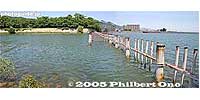
Water intake for Lake Biwa Canal No. 2. The Lake Biwa Canal (Biwako Sosui) supplies water from Lake Biwa in Otsu to Kyoto. After four years of monumental construction, the canal was completed in 1890.
|
|

Hand-painted candles
|
|

Tamagawa River is dammed here by Hamura Intake Weir. Some of the diverted water is released back into Tamagawa River on the right.
|
|

How it looks from the end of the moat.
|
|

Koinobori carp streamers adorn Hokule'a. A great Japanese touch.
|
|

Tamagawa River
|
|

How it looks from the end of the moat.
|
|
|

Map of Tamagawa Josui Aqueduct
|
|
|

Escort ship Kama Hele flying the Japanese, Hawaiian, and Yanmar flags at Yokohama.
|
|

Park adjacent to Tamagawa Josui Aqueduct
|
|

The moat is parallel to the Chuo Line. View from Shin-Mitsuke Bridge. 新見附橋
|
|

Welcome banner from Yanmar
|
|

Statue of the Tamagawa brothers who were consigned to build the Tamagawa Josui Aqueduct.
|
|

Sobu Line passes through.
|
|

Crowd on the waterfront near the pier.
|
|

Sobu Line passes through.
|
|

Statue of the Tamagawa brothers
|
|

Tamagawa Josui canal in Fussa
|
|

Hokule'a crew members
|
|

Materials and technique used for the Tamagawa Josui floodgate in the Edo Period.
|
|

Chuo Line passes through. 中央線
|
|

The Royal Order of Kamehameha I take part in arrival ceremonies. 入港式
|
|

Tamagawa Josui Aqueduct required constant repair and maintenance during the Edo Period. It created new jobs for Hamura residents (mostly farmers).
|
|
|

Hokule'a arrival ceremonies
|
|

Tamagawa Josui Aqueduct lined with cherry trees. I missed the full bloom period.
|
|

Photographers who love trains and cherries flock here.
|
|

Captain Bruce Blankenfeld places a lei on the bow.
|
|

Walking path parallel to Tamagawa Josui Aqueduct. These are all cherry trees.
|
|
|

Hula dancers
|
|

Water intake for Lake Biwa Canal No. 2
|
|

Cherry trees
|
|

Canal Cafe
|
|

Hula dancers take part in arrival ceremonies.
|
|

Tamagawa Josui Aqueduct
|
|

Sotobori Park on the other side of the moat. 外濠公園
|
|
|

Tamagawa Josui Aqueduct goes on for over 40 km to Yotsuya in Tokyo.
|
|

Hokule'a crew dance on the canoe.
|
|

Royal Order of Kamehameha I
|
|

Royal Order of Kamehameha I wear red and gold capes.
|
|

Royal Order of Kamehameha I leave the pier.
|
|
|

Conch shell blower
|
|

Crew members hug each other.
|
|

Former Yokozuna Akebono (blue shirt) and his family were also on the pier. (Wife and daughter in orange.)
|
|

Water intake for Lake Biwa Canal No. 2
|
|

Sakurajima 桜島Part of Kirishima-Yaku National Park.
|
|
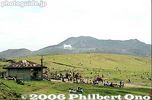
Kusasenri park 草千里Grassy park on the periphery of Mt. Aso.
|
|

Nainoa Thompson and other crew members get off the boat. Nainoa was on board, but was not part of the crew who brought the canoe to Yokohama.
|
|

Sakurajima 桜島
|
|

Horseback riding at Kusasenri. 草千里
|
|
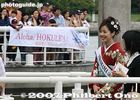
Miss Yokohama also took part in the arrival ceremonies.
|
|

View from the slope
|
|
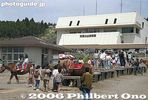
Aso Volcano Museum 阿蘇火山博物館
|
|

Arrival ceremony ends and people start to leave the pier.
|
|

Walking paths near the mountain.
|
|
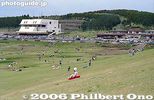
Kusasenri
|
|

Future Hokule'a Captain, Ka'iu Murphy.
|
|
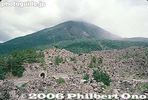
Sakurajima, Kagoshima. Part of Kirishima-Yaku National Park. 桜島
|
|
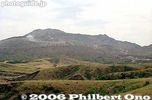
View of Mt. Aso
|
|

All the crew members met applause and handshakes.
|
|

Leaving Sakurajima across the bay.
|
|
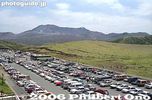
Kusasenri parking lot
|
|

All the crew members were very friendly to all. This is Captain/Navigator Chadd Paishon.
|
|
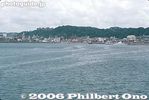
Kagoshima port
|
|
|

Kimo
|
|
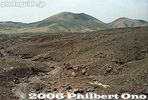
Spectacular ropeway ride
|
|

Captain Blankenfeld who piloted the canoe to Yokohama.
|
|
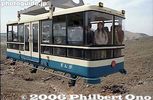
Aso-san Ropeway 阿蘇山ロープウェー
|
|

Finally, Nainoa Thompson makes his way from the pier and into the crowd.
|
|
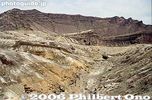
Ropeway
|
|

Nainoa Thompson
|
|
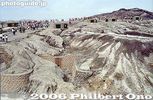
Aso Crater rim
|
|

Nainoa shook every single hand.
|
|

Notice the emergency shelters.
|
|

He shook hands with EVERYBODY and ANYBODY.
|
|
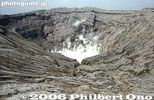
Mt. Naka-dake is Mt. Aso's most famous crater, Kumamoto 阿蘇山 中岳火口Measures 1 km wide north to south and 4 km east to west.
|
|
|

Mt. Naka-dake in Aso-san, Kumamoto. Measures 1 km wide north to south and 4 km east to west. 阿蘇山 中岳火口
|
|

The crowd was thrilled to be so close to this man full of aloha.
|
|

Always smoking, Mt. Naka-dake in Aso-san, Kumamoto 阿蘇山 中岳火口
|
|

People line up to shake Nainoa's hand or get his autograph or take his picture.
|
|
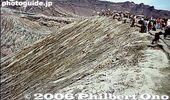
Crater rim
|
|
|
|

Sign for taking "I was here" photos.
|
|

Nainoa has a habit of crouching on his knees so he can use his knee as a backing to sign autographs.
|
|

World's largest caldera still active.
|
|

"Here you go!"
|
|
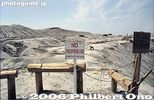
No entry
|
|

Plus a handshake for this little guy...
|
|
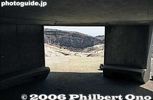
Inside emergency shelter.
|
|

He never refused to sign an autograph.
|
|
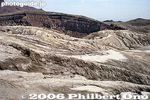
Spectacular rock and cliff formations.
|
|
|
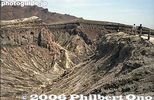
Fantastic artwork by nature
|
|

He never refused to shake a hand.
|
|

Art of nature
|
|

This woman put a small necklace on him.
|
|
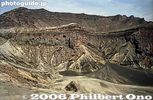
Natural sculptures
|
|

I have never seen anyone who shook everybody's hand, signed autographs for everyone, and posed for all photographers. ナイノア・トンプソン
|
|
|

Finally at the end, a little girl's artwork on a sheet of cloth catches his eye.
|
|
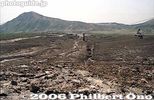
Walking back instead of taking the ropeway.
|
|

He poses with the girl.
|
|
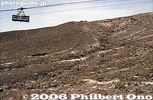
Ropeway
|
|

He was so touched and impressed that he gave her a hug.
|
|
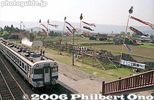
Aso Station
|
|

He actually wanted her to keep her magnificant work of art, but she wanted him to have it.
|
|

The little girl was in awe and speechless.
|
|

He accepts the little girl's impressive gift.
|
|

He folds the sheet neatly and carries it with him to a press conference which he was late in attending. An ideal Goodwill Ambassador.
|
|

June 10, 2007. A formal welcoming ceremony was held the next day on an outdoor terrace near the pier. Unfortunately, it was a rainy day and attendance was much smaller than the day before. 入港歓迎セレモニー
|
|

Captain Blankenfeld receives a gift.
|
|

The ceremony included hula chanting and dancing.
|
|
|
|
|

A local taiko troupe give a spectacular performance. 学校法人国際学園 星槎国際高等学校
|
|
|
|

In return, the crew performs the haka dance.
|
|

A small crowd watch the welcome ceremony. パシフィコ横浜国立大ホール前テラス
|
|

Hula dancers watch the ceremony
|
|

Nainoa Thompson gives a thank you speech with Hokule'a's captains.
|
|
|
|
|
|

Nainoa Thompson gave a touching speech about Japan-Hawaii friendship, their rediscovery of Japan ("Japan is not just Tokyo"), and Hokule'a's mission.
|
|
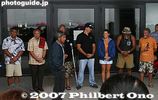
Nainoa introduces the rest of the crew and future Hokule'a captains being groomed to take over.
|
|
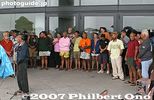
Hokule'a crew on stage.
|
|
|
|

Hokule'a at Yokohama
|
|

Hokule'a and Kama Hele in Yokohama, June 10, 2007
|
|

Water intake for Lake Biwa Canal No. 2
|
|

Water intake for Lake Biwa Canal No. 2. The canal is covered. The water supply for Kyoto and Osaka.
|
|

Water intake for Lake Biwa Canal No. 2. This is the second, almost parallel canal constructed in 1912.
|
|

Water intake for Lake Biwa Canal No. 1
|
|

Water intake for Lake Biwa Canal No. 1 at Mihogasaki
|
|

Water intake for Lake Biwa Canal No. 1. Kyoto was thereby revitalized with electric power and a stable water supply. A second, almost parallel canal for drinking water was also constructed in 1912.
|
|
|
|
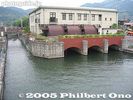
Lake Biwa Canal No. 1
|
|

Lake Biwa Canal No. 1
|
|

Lake Biwa Canal No. 1. The Lake Biwa Canal (Biwako Sosui) supplies water from Lake Biwa in Otsu to Kyoto. After four years of monumental construction, the canal was completed in 1890.
|
|
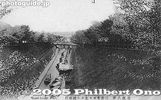
Lake Biwa Canal on vintage postcard. Notice the boats in the canal. Boat rides were initially offered.
|
|

Biwako Sosui. The city of Otsu is thinking about resurrecting a tourist boat service on this canal. MAP
|
|
|

The Biwako Sosui or Lake Biwa Canal in Otsu is also noted for cherry blossoms.
|
|
|
|
|
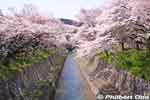
Lake Biwa Canal (Biwako Sosui) and cherry blossoms. This is one of two canals which supply water from Lake Biwa to Kyoto. National Historic Site
|
|

Lake Biwa Canal and cherry blossoms in full bloom. They also light up the trees at night from 6:30 pm-9:30 pm. Beautiful and serene.
|
|
|
|

Lake Biwa Canal and cherry blossoms.
|
|
|

Lake Biwa Canal and cherry blossoms above the tunnel entrance.
|
|

No. 1 Tunnel entrance. The first and longest tunnel under a mountain. The entrance is very artistic.
|
|
|
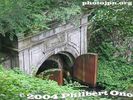
No. 1 Tunnel entrance.
|
|

Pukari Sanbashi Pier. Hokule'a can be seen on the left. On the right is another pier for sightseeing boats. The building in the middle is a resthouse.
|
|
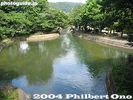
The canal in Kyoto near Yamashina.
|
|
|
|
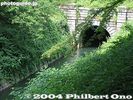
No. 1 Tunnel exit
|
|
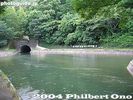
Yamashina
|
|
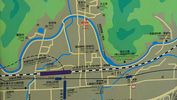
Yamashina map showing the exposed portion of the Lake Biwa Canal near JR Yamashina Station in Kyoto.
|
|

Yamashina
|
|
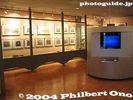
Lake Biwa Canal Museum in KyotoAt the end of the canal, there's this museum in Kyoto tracing the history of the canal.
|
|
|
|
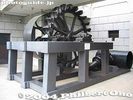
Pelton water wheel at Lake Biwa Canal MuseumUsed at the Keage Power Plant to generate electricity. The Keage Plant was Japan's first hydroelectric power plant.
|
|
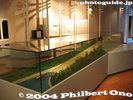
Lake Biwa Canal MuseumModel of Keage Incline.
|
|

Bottom of Keage Incline in Kyoto
|
|
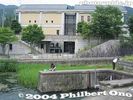
Lake Biwa Canal Museum at bottom of Keage InclineThe museum opened in 1996.
|
|

Map of canal route
|
|

Bottom of Keage InclineThe Keage Incline was a dry slope which connected the upper part of the canal with the lower part of the canal. Since the canal was disconnected by this dry slope, boat trolleys on rails ferried boats between the upper and lower sections of the canal. It was in operation until 1948.
|
|

Keage InclineThe Keage Incline was a dry slope which connected the upper part of the canal with the lower part of the canal. Since the canal was disconnected by this dry slope, boat trolleys on rails ferried boats between the upper and lower sections of the canal. It was in operation until 1948.
|
|
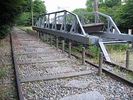
Keage Incline boat trolleyThe Keage Incline was a dry slope which connected the upper part of the canal with the lower part of the canal. Since the canal was disconnected by this dry slope, boat trolleys on rails ferried boats between the upper and lower sections of the canal. It was in operation until 1948.
|
|
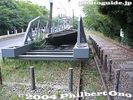
Keage Incline boat trolley
|
|

Keage Incline boat trolleyThe Keage Incline was once restored in 1977. However, the sample boats are in poor condition.
|
|
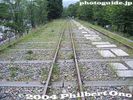
Keage Incline
|
|

Statue of Sakuro Tanabe, the canal engineerIn the park near top of Keage Incline. The canal is lined with various monuments and writings, especially on the canal tunnel entrances.
|
|
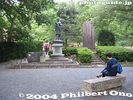
Park near top of Keage Incline
|
|

Keage Hydroelectric Power Plant pipes
|
|
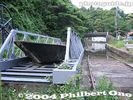
Top of Keage InclineThe boat would be loaded onto the trolley here, then taken down the incline. Or vice versa.
|
|

Top of Keage InclineThe boat would be loaded onto the trolley here, then taken down the incline. Or vice versa.
|
|

Grand Canal and Ponte di Rialto bridgeThis is the main bridge crossing the Grand Canal. The middle of the bridge has a row of shops.
|
|
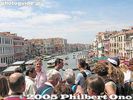
Atop Ponte di Rialto bridgeThis is one of three bridges crossing the Grand Canal.
|
|
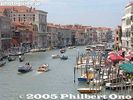
View from Ponte di Rialto bridge
|
|
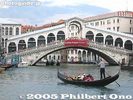
Ponte di Rialto bridge and gondola
|
|
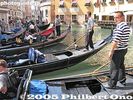
Gondola stationA gondola ride is not exactly cheap, but affordable with 5 or 6 people.
|
|

Gondola
|
|
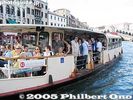
Common boatThis is one of the most common means of public transportation in Venice. Many of the canals have heavy boat traffic.
|
|
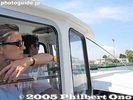
Boat crew
|
|

Boat captain
|
|

Milk shake with a Yubari melon flavor.
|
|

Otaru Canal is a short walk from Otaru Station.
|
|

Otaru Canal has a large walkway alongside.
|
|
|

Some artists show their work here.
|
|

Otaru Canal
|
|

Otaru Unga. "Unga" means canal.
|
|
|

Murals showing some history of Otaru's marine transportation.
|
|
|

Otaru Canal
|
|

East end of Otaru Canal
|
|

East end of Otaru Canal
|
|

Warehouse along the Otaru Canal
|
|

Restaurant near Otaru Canal.
|
|
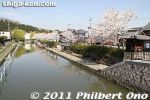
Hachiman-bori is quite long and it even connects to Lake Biwa. The main part of moat is about 1 km long. I started walking here on the west end near the Omi-Hachiman Public Library. MAP
|
|
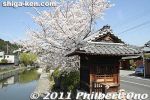
Hachiman-bori is also part of the National Important Traditional Townscape Preservation District (重要伝統的建造物群保存地区).
|
|
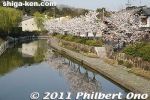
If the cherry blossoms are in bloom, I recommend walking along the canal from the west end since the sun will be on your back and on the flowers.
|
|
| 824 files on 4 page(s) |
1 |
 |
|